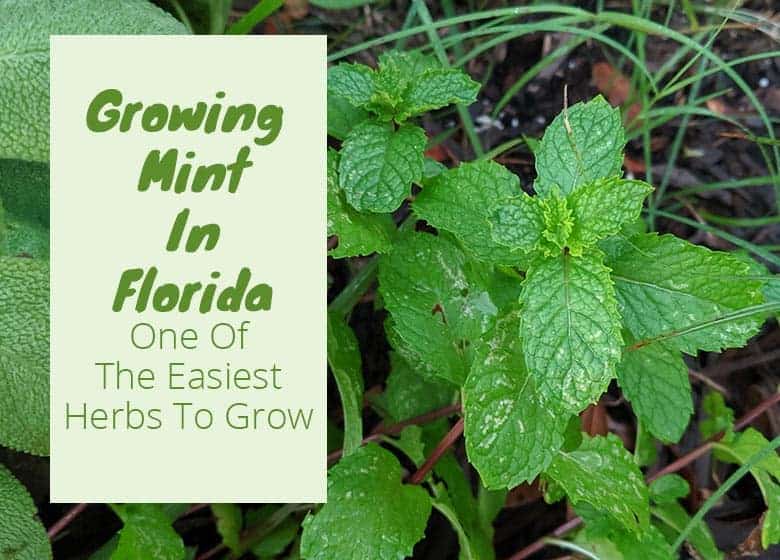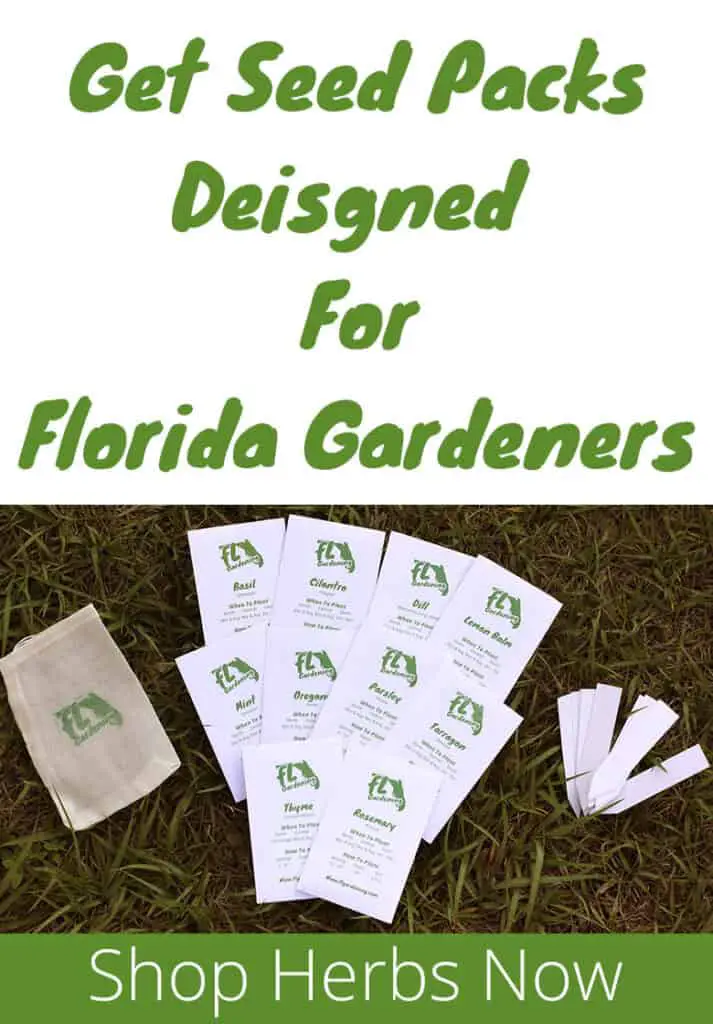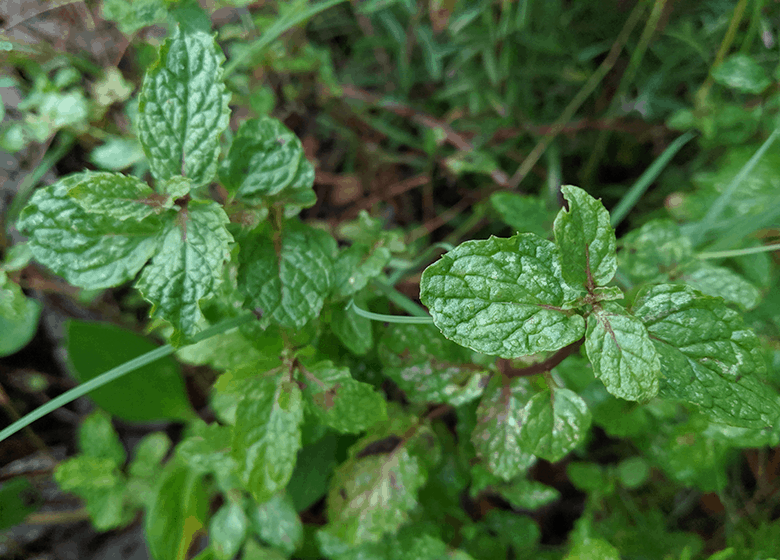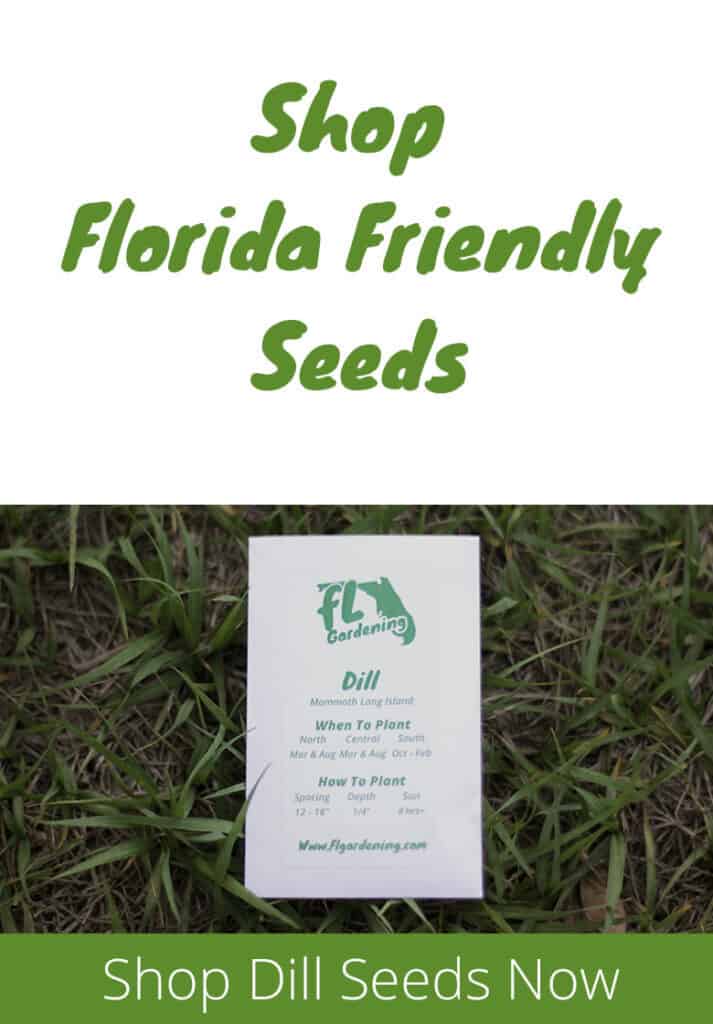
Can You grow mint in Florida with the weather that we have?
Mint will thrive in the cooler climates of northern Florida, as well as in the warmer subtropical conditions of southern Florida. In Florida, most of the mint varieties will grow in shade or full sun. Spearmint, peppermint, apple, and orange mints are some of the popular mint varieties in the State.
Mint is among the easiest plants to cultivate, particularly because it needs little attention. Mint varieties have plenty of uses, ranging from medicinal to culinary.
If you are wondering how to grow mint in Florida, with our hot and humid weather, read on for tips on how to cultivate mint effectively.

When to Plant Mint in Florida?
Spring is the ideal time to plant mint, or in the fall when there is no frost. Although mint is a resilient herb, it is still advisable to plant it in optimal conditions.
Varieties of Mint
Most kinds of mint need similar conditions. Every mint type is recognized for its own scent or flavor, although some may be similar. Different mint varieties are suited for either culinary, medicinal, aromatic, and aesthetic purposes. The common varieties include:
Peppermint
Peppermint is recognizable by its green leaves with serrated edges and light purple flowers. It thrives across North America, Europe, and Asia. The US supplies 70% of the peppermint supply in the world.
It is a natural hybrid of spearmint and watermint, and it was initially cultivated in England in the late 17th century. Its use goes back to ancient Egyptian times, where it was a valued remedy for indigestion. In the 18th century, peppermint was highly regarded in western European society in addressing respiratory illnesses, morning sickness, vomiting, menstrual disorders, and nausea. Peppermint is mainly cultivated for its oils, which includes triterpenes, phenolic acids, and flavonoids.
The menthol content of a peppermint plant informs the quality of its essential oil, and it varies upon habitat and climate. The menthol concentration of American peppermint is 50-78% while that of the English peppermint ranges between 60-70%.
Spearmint
The general attributes of spearmint are similar to those of peppermint, but it is more aggressive in its growth. Spearmint was also naturalized in Europe and then introduced in North America. It is unbranched, and it blooms in thick clumps in moist regions near streams, along roadsides, and in low meadows where it may reach heights of two to three feet.
It contains the volatile oil, limonene, rosmaric acid, the flavonoid thymonin, and carvone. Carvone is credited with giving spearmint its distinctive, pungent aroma. Spearmint, like peppermint, is grown for the production of oil, although on a less extensive scale.
Apple Mint
Apple mint plants are known for their woolly stems and their fragrant serrated leaves. Its fruity aroma has nuances of apple, and it has less mint flavor when compared to other mint types. Apple mint blooms to reveal spears of white to pink flowers.
It was mostly thriving in the ruins of ancient monasteries. Monks commonly used it to address epileptic fits because it was thought to be refreshing for the brain. In the modern-day, apple mint is used for various medicinal and edible uses.

Growing Mint
Mint is quite difficult to grow from seeds, and it can even be impossible for some varieties. You can take a cutting from a pre-existing plant, or purchase a seedling or small plant. You can also get a runner from people already growing the mint plant.
Growing mint in a container is commonly preferred since you can easily keep it in check. Mint spreads rigorously, and its roots often choke the roots of other plants. If you grow the mint in a pot, it is best to avoid adding another plant.
Use a 12-to-16-inch-wide container for a single plant. Place the pot in a region that receives a lot of morning sun and afternoon shade. You can even position it on a windowsill, provided it will absorb sufficient sunlight.
If you are planting the mint on the ground, choose a damp location with full sun or partial shade. Mint prefers fertile soil, with a PH between 6.0 to 7.0. Place some mulch around the mint’s roots to ensure the soil remains moist. Mint can thrive on its own, although you can add a little fertilizer every few weeks.
During the first year of growth, you will require to water the mint frequently. The soil should be maintained damp and not soaked. Water the mint frequently if it is in direct sun.
Trim the top of your mint plant to control its height and to create a better harvest. The small flowers of your plants will likely bloom from June to September.
Harvesting
You can harvest mint leaves as needed from late spring to early autumn. Do not harvest over a third of the leaves at once, and you should give the plant time to regrow. Hang the stems upside down if you intend to air dry your mint.
Harvest as much mint as you can before the frost every year. The roots typically survive winter to regrow the subsequent spring, although the above-ground matter dies off. You can add a layer of mulch before winter to protect the roots. Pinch off the stems to harvest the leaves. In the case of a large harvest, you can wait before the mint blooms, and cut the entire plant above the first or second set of leaves.
Pests/Problems with Mint
Mint can quickly become uncontrollable and take over your garden. Controlling mint plants is vital, and growing them in containers is one way gardeners keep them in check.
Several pests and diseases always target mint. Mint rust reveals itself in the form of small brown or yellow pustules on the underside of the leaves. New shoots can also be pale or distorted, and large parts of leaf tissues die and drop off from the plant.
To prevent this fungus from spreading, you can remove the infected rhizomes and plants.
The pests that commonly affect mint include aphids, cutworms, spider mites, and thrips. The pests mostly hide on the underside of the leaves, and you can knock them off with a spray from a garden hose.
Uses of Mint
Some mints are valued edibles, and you can chop them into salads or sprinkle them over fruits. You can also make peppermint tea with fresh harvest. Twist a few clean leaves to release the oils, and add the crushed leaves to a cup of hot water. You can also add leaves to fresh lemonade, mojitos, and iced tea.
The mint plant is rich in nutrients, including iron, manganese, folate, and Vitamin A. Mint is additionally a great source of antioxidants.
Mint is also an herbal remedy for irritable bowel syndrome, a digestive disorder characterized by bloating, stomach pain, and gas. Peppermint oil has concentrations of menthol, which exerts relaxing effects on the muscles in the digestive tract. Mint can also effectively address other digestive problems, like indigestion and an upset stomach.
Menthol, which is present in mint, is commonly contained in balms that relieve nasal congestion. It also relieves congestion of lungs, bronchi, and throat.
Mint can also help in breastfeeding, according to a study included in the International Breastfeeding Journal in 2007. Mint oil reduce the nipple cracks and pain linked to breastfeeding.
The herb can also be incorporated in skincare. The juice extracted from mint leaves is a great skin cleanser. It soothes the skin while curing itchiness and infections. By reducing pimples, the juice can also help relieve acne. Its anti-pruritic attributes will also treat bug and insect bites, including those of wasps, mosquitoes, and honeybees.
Other uses of mint include:
- You can include mint in your air freshener by adding several drops of the essential oil in it. You can also add some drops in an unscented store-bought cleaner to keep your home smelling fresh.
- Mint is also used to treat headaches, as the compounds in the essential oil are thought to calm muscle spasms. You can rub several drops of the oil to your temple to address migraines.
- Mint also comes in handy as a sunburn soother. Make strong peppermint tea, and refrigerate it for several hours. Use cotton pads to apply this mixture to the affected area.
- Make a refreshing mint bath by adding several mint leaves to bathwater.
- Mint also serves as a moth and bug repellant. On the other hand, mint attracts beneficial insects since it is rich in pollen and nectar. Hoverflies and honeybees will also help pollinate other plants in your garden.
- Breath mints and chewing gum with a mint flavor are commonly used to mask bad breath. Menthol is a popular ingredient in oral care products since it inhibits bacterial growth inside the mouth. You can also consume peppermint tea to encourage oral health.
You Will Probably Also Like



